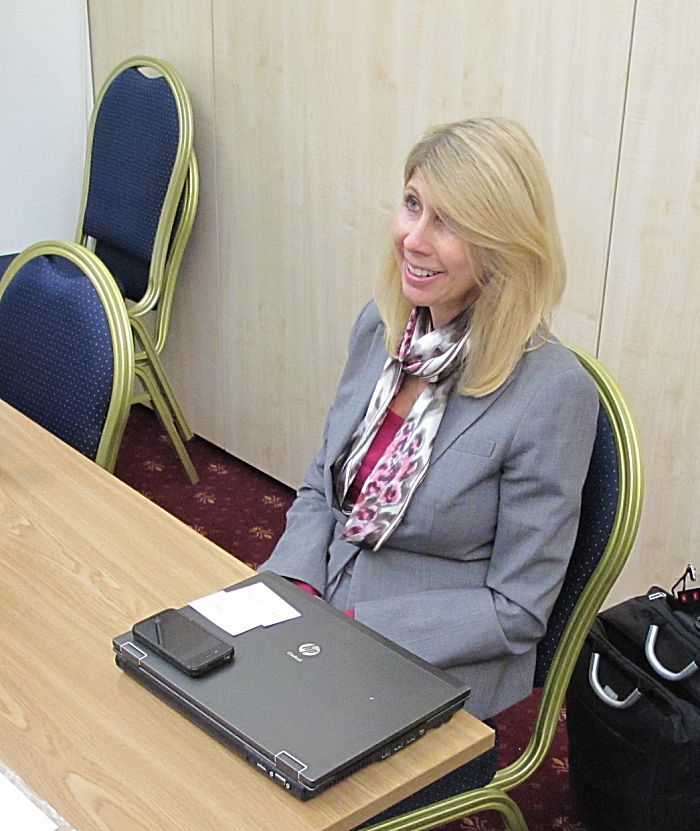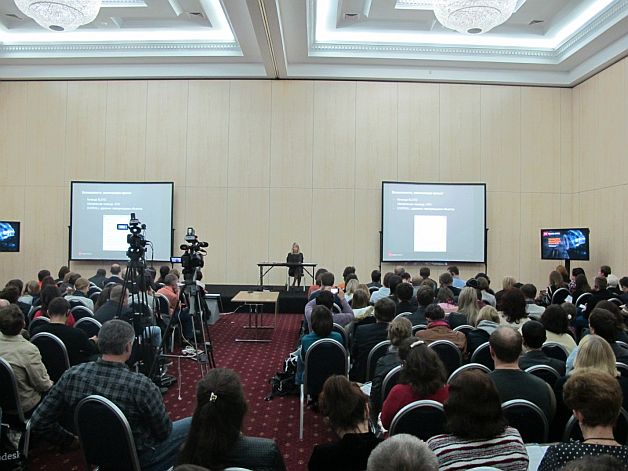|
Articles
8 Aug 2013 Moving to BIMLynn Allen
Lynn Allen, Cadalyst columnist and Autodesk Technical Evangelist, speaks to more than 30,000 users worldwide each year. For the past twenty years she has written a regular column in Cadalyst magazine called "Circles and Lines" and is the voice behind the popular Cadalyst videos –“Tips and Tricks with Lynn Allen”. Lynn started using Autodesk® software over 20 years ago, and taught at the corporate and collegiate level for 13 years before joining Autodesk. A sought-after public speaker with a unique comedic style, Lynn is always one of the highest rated speakers and host of Autodesk University®. The author of three AutoCAD books, her latest is entitled AutoCAD Professional Tips and Techniques.
After her bright participation in Autodesk University Russia 2012 last october, Lynn bacame widely known in the mass Russian-language market: a large and informal interview for isicad.ru made a significant contribution to this.
The article published today was kindly written especially for isicad.ru (see the Russian translation). Note that in Russia BIM has definitely entered into the boom phase: many dozens of papers and some very hot disputes at isicad.ru is one of the indications. Another one is Lynn’s definite plan to speak (very probably – about BIM, and maybe additionally - about AutoCAD) at Autodesk University Russia 2013 this October.

As I travel around the world – one fact that is very clear as it relates to the AEC industry is this: BIM is here to stay! More and more architects, engineers and contractors are making the move to BIM. More and more building owners are requiring BIM. Even Facility managers are starting to embrace BIM models as their starting point for space management. BIM adoption is on the rise everywhere – there are countless studies to show that. The UK government has gone so far as to mandate that all public sector contracts must include BIM by the year 2016. Clearly BIM adoption is on the rise everywhere.
The advantages of BIM are many. Let’s take a look at a few standouts:
1. Fewer construction change orders – less money wasted
It is estimated that about 25% of all construction dollars are wasted each year (and some of you readers might even consider that a low number). A good BIM model will reach the construction phase (nearly) clash free. This also results in lower RFIs (request for information), less wasted time, etc. A BIM model can also improve scheduling resulting in better coordination of construction teams, materials and equipment.
2. You can perform analysis on a BIM model – leading to increased efficiency and longer building lifecycle
A 3D BIM model opens the door to all types of analysis: energy, structural, construction and environmental just to name a few. More and more governments are requiring energy efficiency and sustainability measures in building projects. Analysis means better design, and better overall results helping to contribute to the extended life of a building.
3. BIM lends itself to 3D Visualization and winning more proposals
3D Visualization, along with rendering, increases multiparty communication and understanding. You can communicate your vision much more effectively with a 3D model than a 2D CAD drawing. There’s a higher likelihood that the architect and the building owner will see eye to eye when reviewing a 3D model. Construction crews can clearly identify their goal and steps along the way. How many change orders have been caused as a result of not interpreting the 2D CAD drawing properly?
I would also add that a rendered BIM model will beat out a 2D CAD drawing proposal any day!
4. Change it once, change it everywhere saves time
You can easily create the construction documents from a well-developed BIM model. Changes on 2D CAD drawings are tedious and time consuming (not to mention subject to error) With a BIM model - any changes that occur to the model – automatically trickles down to the related construction docs saving time, energy with less likelihood of error.

Moscow, October 2012: interview for isicad.ru
These are just a few of the many advantages of adopting BIM – the list is much longer than the few I mentioned. Let’s say you’ve made that decision and you’re ready to make the leap (and let me assure you it is a leap and not a little hop). Where do you start? What do you need to know to leave your CAD World behind and move into the BIM hemisphere?
First and foremost – you need to get everyone who is involved in that leap onboard. Moving to BIM isn’t just a change in software (i.e. moving from AutoCAD to Revit). Moving to BIM also requires a change in process. For starters, a well-developed BIM model is assembled in the same way a building is constructed. That is certainly a change from dealing with the lines, arcs and circles of a CAD program. Ideally, someone with construction expertise will be there to advise and train those responsible for building the model. And while more time is spent in the early design phase, the amount of time generating the construction documents is dramatically reduced - as long as you have a robust BIM model with a fairly high level of development (which is an article all in itself!). It is a rare team member who complains about less time spent on construction documents!
Changing from a software you are comfortable with (like AutoCAD) to an entirely new software product (like Revit) is also a big change. I’m not going to sugarcoat it – these are two entirely different types of software products, there is a big adjustment. Some AutoCAD users never make it. Even though today’s BIM modeling products, such as Revit, are based on newer technology and are easier to use – some die-hard AutoCAD users will not be able to make the move. Personally I believe it’s a mental issue – not wanting to give up their expertise in one product to become a beginner in another. I always advise that if you can learn AutoCAD (which is not an easy product to learn) – you can definitely learn Revit. You just have to be willing and open minded. Revit was designed with the AEC user in mind. AutoCAD is more of a generic software product that was designed to be all things for all disciplines.
There are a variety of techniques for getting the team onboard including:
- Emphasizing that their individual marketability and worth in the job market will go up as their BIM expertise develops.
- Having a strong plan that includes training (both in software and process). This is crucial to a successful BIM implementation.
- Assured patience from upper management as they roll out their first project as there is a fairly significant learning curve.
- Access to a BIM and/or a Revit expert to help ensure success.
When all is said and done – your team will have a robust, well defined BIM model that can be used throughout the entire lifecycle of the building. That is a huge accomplishment that will add value to the team as well as the company.
And what will you do with the AutoCAD rebels who are not willing to make the leap? Well I am a firm believer that there is still a place for AutoCAD in the BIM cycle. Keep them onboard – because once someone has made the move to BIM and Revit – they won’t want to go back! That means you are going to need those AutoCAD guys around for modifying legacy drawings and the occasional detail drawings not generated well from BIM modelers.
So what are you waiting for? Jump on the BIM train before it leaves the station without you!

Moscow, October 2012: Lynn’s talk was one of the most attractive at AURussia
See also:
Permanent link :: http://isicad.net/articles.php?article_num=16321

|